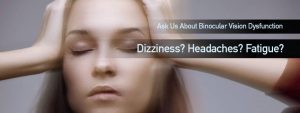Ocular migraines are a rare form of migraines, affecting 1 in 200 migraine sufferers.
What is a ocular migraine?
A visual migraine, also known as an ocular migraine, is a temporary episode of visual distortion. There are two different types of visual migraines, migraine auras and retinal migraines.
What is a migraine aura?
Migraine auras cause visual distortions, but may also cause numbness or tingling, mental fog, or changes in taste, smell, or sense of touch.
An aura can occur with or without a migraine headache, and may sometimes precede the headache.
Migraine auras are quite common, affecting one in five migraine sufferers.
While the visual distortions are temporary, usually lasting around 30 minutes, they can impact your performance of certain activities, such as driving or reading.
The most common visual symptoms include:
- Glittering “stars”
- Flashes of light
- Zigzagging lines
- Blind spots
- Psychedelic images
What is a retinal migraine?
Retinal migraines are episodes of repeated temporary vision loss or blindness in one eye. Retinal migraines can occur with a migraine headache or preceding the headache. Episodes can repeat throughout the day, and last from 5 to 20 minutes.
Retinal migraines are rare, affecting 1 in 200 migraine sufferers.
Retinal migraines usually indicate a serious underlying health problem, and are considered a medical emergency.
If you experience any type of vision loss, seek immediate medical attention.
SEE RELATED: Vision Therapy for Dizziness: Success Stories
If you suffer from migraines, contact an eye doctor near you, who can diagnose and discuss the best treatment options.
What causes visual migraines?
While the exact cause of visual migraines are still uncertain, some researchers believe that they are caused by spasms or changes in the retinal blood vessels or nerves.
However, most doctors believe that they are caused by the same factors that lead to the classic migraine, including:
- Family history of migraines
- Increased estrogen
- Personal triggers
Common triggers may include:
- Bright lights
- Loud noise
- Strong odors
- Stress
- Weather changes
- Alcohol
- Artificial sweeteners
- Caffeine or caffeine withdrawal
- Foods containing nitrates, MSG, or tyramine
How are visual migraines diagnosed?
Visual migraines are diagnosed based on the symptoms you report to your doctor. Before confirming a diagnosis, your doctor will rule out other serious conditions that may cause similar symptoms, such as:
- Amaurosis fugax- a temporary blindness from a blocked artery
- Spasms in the artery that carries blood to the retina
- An autoimmune disease that causes blood vessels to swell
- Giant cell arteritis- a condition that causes the blood cells to swell, leading to vision loss and blindness
- Sickle cell disease and polycythemia- inhibit normal blood clotting
- Drug abuse
How are visual migraines treated?
Migraine auras typically disappear on their own within 30 minutes. If you have an accompanying headache, it is best to take a pain reliever before the headache worsens. In the meantime, during an episode of a migraine aura, try to just relax and close your eyes until the aura passes.
Retinal migraines may be caused by a more serious condition, and should be treated right away.
Seek emergency medical care if you experience a retinal migraine, or any type of vision loss.
How can I prevent a visual migraine?
Speak to your doctor to determine the best way to prevent a visual migraine. If you have specific triggers that bring on a migraine, then try to avoid these triggers as much as possible.
Some doctors may recommend certain medications that may help to reduce your risk of visual migraines, such as:
- Riboflavin (vitamin B12)
- Drugs that treat epilepsy
- Tricyclic antidepressants
- Blood pressure medicines
LEARN MORE: Guide to Neuro-Optometry
Schedule an appointment with an eye doctor for a comprehensive eye exam, and to discuss any questions you may have about treating your migraines.
If you experience visual migraines, or suffer from migraine headaches, speak with your doctor about controlling your symptoms and preventing further episodes in the future.


